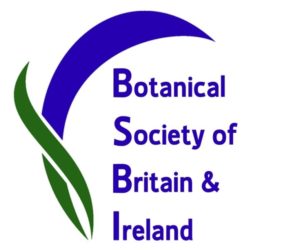Kirkcudbrightshire Botany Group at Loch Valley & Gairland Burn, 02/06/2018
The threatened thunderstorms didn’t materialise which is a great bonus on exposed hillsides! Despite the original intention of going straight up to Loch Valley (NX4381) some 4km distant and 200 metres upwards to start recording there and working our way back to the cars, that didn’t happen. The three of us got delayed by finding interesting patches of less acid ground in what is a very acid environment and arrived at the loch early afternoon and well after lunch.
These interesting patches, scattered in what was basically Bracken–Bluebell–Pignut (Pteridium aquilinum–Hyacinthoides non-scripta–Conopodium majus) acid habitat at the lower levels, were almost neutral in character and often indicated either slight mineral enrichment or slightly raised calcium levels. Sedges were frequent from the grey-green Carnation Sedge Carex panicea, through Glaucous Sedge C. flacca with the two leaf surfaces of different hues; Pale Sedge C. pallescens of a bright, light green colour and crinkled bases to the bracts; the aptly-named Star Sedge C. echinata; the taller Tawny Sedge C. hostiana with its well-separated flowering spikes;, the curved leaves and compact heads of Pill Sedge C. pilulifera; the reflexed individual fruits of the Flea Sedge C. pulicaris; to, finally, the separate male and female shoots of Dioecious Sedge C. dioica in a sparsely vegetated flush. Rather surprisingly Common Sedge C. nigra was not found anywhere on the site.
Other notable finds in these patches included Smooth Lady’s-mantle Alchemilla glabra in full flower; Marsh Valerian Valeriana officinalis recognisable by its pinnate leaves; Yellow Pimpernel Lysimachia nemorum; Bitter Vetch Lathyrus linifolius with rather broader leaflets than usual; small patches of Wood Anemone Anemone nemorosa; the odd plant of nearly flowering Northern Marsh Hawksbeard Crepis paludosa with its stem-clasping leaves; and in two places only the thin trailing strands of Thyme Thymus polytrichum. There were of course the more widespread and commoner species, including the buttercups Ranunculus repens and R. acris, and the two violets Viola riviniana and V. palustris separable by the pointed heart-shaped leaves of the former and the rounded ones of the latter. A few areas were mineral flushes with Spike Rush Eleocharis quinqueflora amongst the Deer-grass Trichophorum germanicum and the above-mentioned Dioecious Sedge C. dioica, all with narrow spike-like leaves on stems – it can be confusing. There was also a couple of stands of the delicate-looking Wood Horsetail Equisetum sylvaticum with the drooping, bright green branches.
At the end of the day all of these helped to exceed the number of species I thought might be found in this uplands meeting – I thought we’d struggle to get 80, but in the end we had 84 in one monad and a further 29 other species in the second one.
The most noticeable ferns were undoubtedly Lemon-scented Fern Oreopteris limbosperma, by far the most frequent one here and easily recognisable by the smell from the crushed fronds, and Hard Fern Blechnum spicant.
The upper part of the trek was through acid Purple Moor-grass Molinia caerulea, the two cottongrasses, the Common Cottongrass Eriophorum angustifolium and the Hare’s-tail Cottongrass E. vaginatum (multiple and single headed flowering spikes respectively) and Heather Calluna vulgaris with not a great deal else. Loch Valley proved to be virtually barren with just 3 species – Bog Pondweed Potamogeton polygonifolius, Shoreweed Littorella littoralis and the partially floating Bulbous Rush Juncus bulbosus. Three separate willow bushes baffled identification, but somewhere in there was Eared Willow Salix aurita and Goat Willow Salix caprea parentage. After that, a debate ensued as to whether it was worth trekking further round the loch through un-pathed vegetation. On balance no – so we turned round and walked back down the hill, using a slightly different route. And a good job too as we found ourselves in the middle of a large, sparsely vegetated flush with abundant Great Sundew Drosera anglica with it large strap-shaped leaves. A very nice find. A fairly rapid descent followed back to the car in a warm, somewhat humid, atmosphere adding a few common species in the lower ground to the list.
Of other things, there were two Common Lizards, a number of toadlets, a Whinchat, a couple of Meadow Pipits one of which was carrying food presumably to a nest, and the probability of a calling Peregrine. Ross pointed out a couple of wasp-like insects – I can’t remember their names – and there was the inevitable Four-spotted Chaser dragonfly, Large Red Damselfly and blue damselflies, but very little else.
David Hawker
BSBI county recorder for Kirkcudbrightshire VC73

